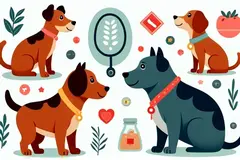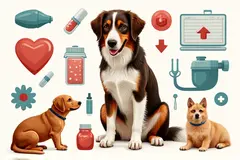 A vaccine that combines two or more components to stimulate the body to produce protection against all the components. Most 'distemper' vaccines for puppies are of the multivalent type, and commonly include distemper, parvovirus, adenovirus cough, hepatitis, and parainfluenza. Compare wit... ↪ Read more
A vaccine that combines two or more components to stimulate the body to produce protection against all the components. Most 'distemper' vaccines for puppies are of the multivalent type, and commonly include distemper, parvovirus, adenovirus cough, hepatitis, and parainfluenza. Compare wit... ↪ Read more Veterinary Drug Handbook (VDH) is the reference veterinarians turn to when they want an independent source of information on the drugs that are used in veterinary medicine today.
-
 Is veterinary Liniment Gel safe for humans?
Is veterinary Liniment Gel safe for humans? -
 Giving Your Cat A Pill
Giving Your Cat A Pill -
 Dog Aggression
Dog Aggression -
 Dogs May Help Boost Infant Health
Dogs May Help Boost Infant Health -
 Animal-Assisted Therapy, Veterinary Social Work, & Social Work With People & Pets in Crisis
Animal-Assisted Therapy, Veterinary Social Work, & Social Work With People & Pets in Crisis -
 On-demand veterinary service gives advice on poorly pets
On-demand veterinary service gives advice on poorly pets -
 Should we stop throwing sticks for dogs?
Should we stop throwing sticks for dogs? -
 Can breathing in cat hair be harmful?
Can breathing in cat hair be harmful? -
 What does PU/PD mean in veterinary medicine?
What does PU/PD mean in veterinary medicine? -
 Bill calls for ban on sales of dogs, cats in Maine pet stores
Bill calls for ban on sales of dogs, cats in Maine pet stores -
 Common Meanings Of Cat Behavior
Common Meanings Of Cat Behavior -
 What does DVM stand for in veterinary?
What does DVM stand for in veterinary? -
 Curing Bad Cat Breath
Curing Bad Cat Breath -
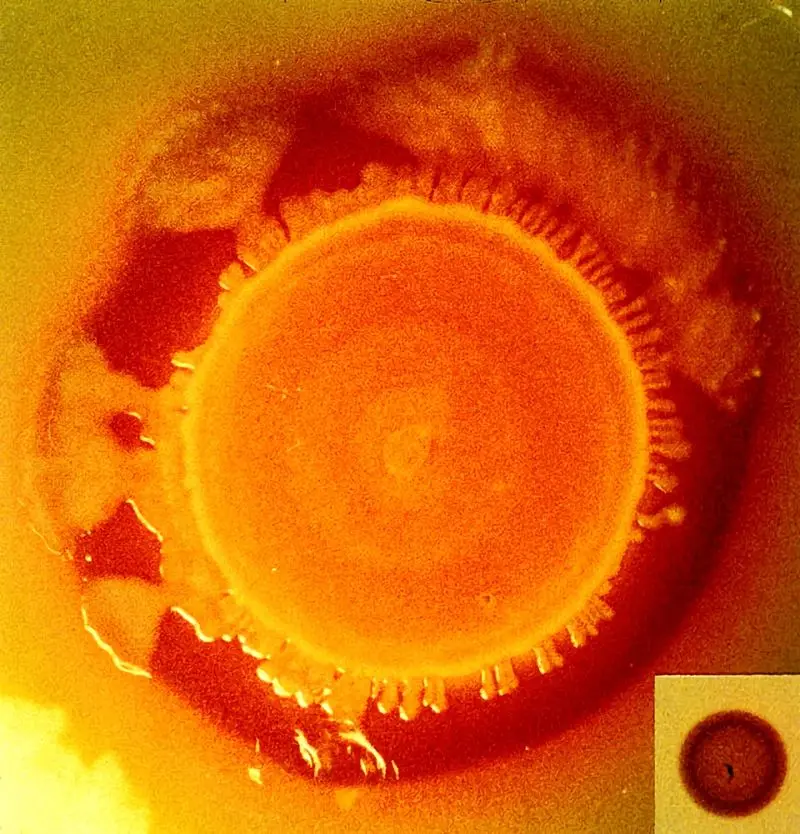 New Tracking Tool for Pathogen Investigators
New Tracking Tool for Pathogen Investigators -
Can binturongs be kept as pets?
-
 How long do instruments stay sterile after autoclaving veterinary?
How long do instruments stay sterile after autoclaving veterinary?
Multivalent vaccine
 A vaccine that combines two or more components to stimulate the body to produce protection against all the components. Most 'distemper' vaccines for puppies are of the multivalent type, and commonly include distemper, parvovirus, adenovirus cough, hepatitis, and parainfluenza. Compare wit... ↪ Read more
A vaccine that combines two or more components to stimulate the body to produce protection against all the components. Most 'distemper' vaccines for puppies are of the multivalent type, and commonly include distemper, parvovirus, adenovirus cough, hepatitis, and parainfluenza. Compare wit... ↪ Read more Mucous membranes
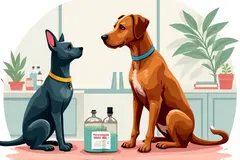 Specialized membrane which covers various passages and cavities exposed to the air such as the mouth, nose, inner portion of the eyelids, vagina. Examination of the mucous membranes can provide important information: if they are dry the animal is likely dehydrated; pale, and the animal may be anemic... ↪ Read more
Specialized membrane which covers various passages and cavities exposed to the air such as the mouth, nose, inner portion of the eyelids, vagina. Examination of the mucous membranes can provide important information: if they are dry the animal is likely dehydrated; pale, and the animal may be anemic... ↪ Read more Mucosa
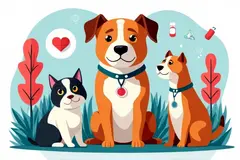 See Mucous membranes. The pink lining of an organ, such as the lining of the nose, mouth, vagina, penis.... ↪ Read more
See Mucous membranes. The pink lining of an organ, such as the lining of the nose, mouth, vagina, penis.... ↪ Read more Mucopolysaccharide
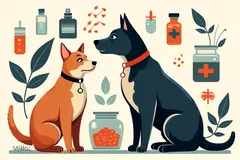 A carbohydrate which also contains a hexosamine molecule and is a component of mucous.... ↪ Read more
A carbohydrate which also contains a hexosamine molecule and is a component of mucous.... ↪ Read more Mucolytic
Monoamine oxidase inhibitor (MAOI)
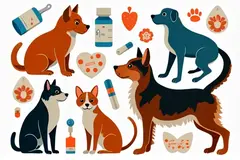 substances that inactivate the enzyme monoamine oxidase which regulates certain transmitter chemicals between nerves. These compounds include certain types of antidepressants and also insecticides containing amitraz (such as Mitaban and Preventic collars). Motility: movement, e.g., intestinal... ↪ Read more
substances that inactivate the enzyme monoamine oxidase which regulates certain transmitter chemicals between nerves. These compounds include certain types of antidepressants and also insecticides containing amitraz (such as Mitaban and Preventic collars). Motility: movement, e.g., intestinal... ↪ Read more Monovalent vaccine
 A vaccine that is manufactured to stimulate the body to produce protection against only one disease, e.g., rabies vaccine. Compare with 'multivalent vaccine'.... ↪ Read more
A vaccine that is manufactured to stimulate the body to produce protection against only one disease, e.g., rabies vaccine. Compare with 'multivalent vaccine'.... ↪ Read more Modified live vaccine
 Vaccines which are made by taking the real, disease-causing virus and altering (attenuating) it in a laboratory to a non-disease causing virus. Compare with 'killed vaccine' and 'recombinant vaccine'.... ↪ Read more
Vaccines which are made by taking the real, disease-causing virus and altering (attenuating) it in a laboratory to a non-disease causing virus. Compare with 'killed vaccine' and 'recombinant vaccine'.... ↪ Read more mL
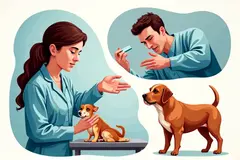 Short for milliliter. A liquid measure, the same volume as a cc. 28 mL = 1 liquid oz.... ↪ Read more
Short for milliliter. A liquid measure, the same volume as a cc. 28 mL = 1 liquid oz.... ↪ Read more Mitochondria
Miticide
Mineralocorticoids
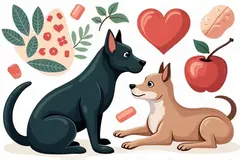 Hormones produced by the adrenal gland which regulate the amounts of sodium, potassium and chloride in the blood.... ↪ Read more
Hormones produced by the adrenal gland which regulate the amounts of sodium, potassium and chloride in the blood.... ↪ Read more Popular Diagnoses
Packed cell volume (PCV, hematocrit) Reflex ovulator Mucolytic Microfilaricide Bronchodilator Hematocrit Glucocorticoid Monoamine oxidase inhibitor (MAOI) ↪ All veterinary diagnoseOther Diagnoses
Electrocardiogram (EKG) Electrolyte Emesis Encephalopathy Endoscope Enteral feeding Enteritis EnzymesPopular Veterinary Clinics
VCA Welborn Animal Hospital, 7860 Washington Avenue Kansas City, KS 66112 USA MedVet Columbus, 300 East Wilson Bridge Road, Worthington, OH Rutland Veterinary Clinic & Surgical Center, 90 East Pittsford Road, Rutland, VT VCA Paradise Valley Emergency Animal Hospital, 6969 East Shea Boulevard Suite 150 Scottsdale, AZ 85254 USA Connecticut Veterinary Center & Pet ER, 470 Oakwood Ave West Hartford, CT 06110 USA Norway Veterinary Hospital, 10 Main St P.O. Box 273 Norway, ME 04268 USA Craig Road Animal Hospital, 5051 West Craig Road, Las Vegas, NV Abri Veterinary Hospital Inc, 1449 Trademart Boulevard Winston-Salem, NC 27127 USA ↪ All veterinary clinicsOther Veterinary Clinics
Milton Animal Hospital, 4282 Avalon Blvd Milton, FL 32583 USA Olive Branch Pet Hospital, 4220 North Davis Highway, Pensacola, FL Spanish Trail Veterinary Hospital, PA, 6801 Spanish Trail Pensacola, FL 32504 USA Animal Hospital of Pensacola, 5001 North 12th Avenue Pensacola, FL 32504 USA Rehm Animal Clinic at Timber Run, 12481 Co Road 64, Loxley, AL VCA Phoenix West Animal Hospital, 6530 West Indian School Road Phoenix, AZ 85033 USA Apollo Animal Hospital, 10707 N 51st Ave Glendale, AZ 85304 USA Sun City Animal Hospita, 10026 Santa Fe Drive Sun City, AZ 85351 USAPopular Drugs
DOXYLAMINE SUCCINATE Doses - PENICILLIN V POTASSIUM Doses - METHYLPREDNISOLONE, METHYLPREDNISOLONE ACETATE, METHYLPREDNISOLONE SODIUM SUCCINATE ACEPROMAZINE MALEATE Doses - PREDNISOLONE, PREDNISOLONE SODIUM SUCCINATE, PREDNISOLONE ACETATE, PREDNISONE Doses - FURAZOLIDONE Doses - FERROUS SULFATE Doses - LEVAMISOLE ↪ All veterinary drugOther Drugs
Cefpodoxime Proxetil Iron Hydrogenated Dextran Injection Hemantic GentaSoothe Topical Spray Cornucrescine Daily Hoof Moisturiser PURRGE Cornucrescine The Original Hoof Ointment Carr & Day & Martin Cornucrescine Daily Hoof Dressing Gallop MedicatedPopular Terms
Subalbinotic Steatis Uteroverdin Paradoxical CSF acidosis Figure of 8 suture pattern Nerve root signature Ovariohysterectomy Abrev OVH Signalment ↪ All veterinary termOther Terms
Aortic semilunar valve Daughter Daughter cell Deacon Dead mouth Dead weight Deaf ear Deafnessveterinary-help.com
© 2011-2025 Veterinary Clinics, Diagnoses, Terms and Drug Handbook Online



